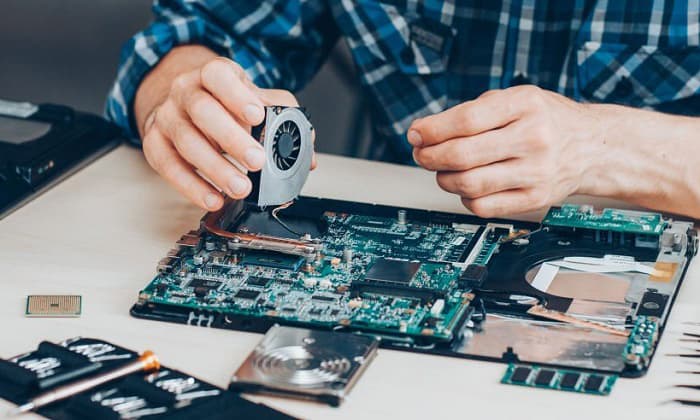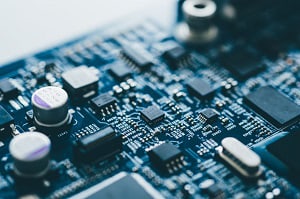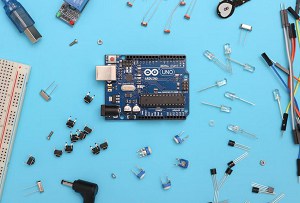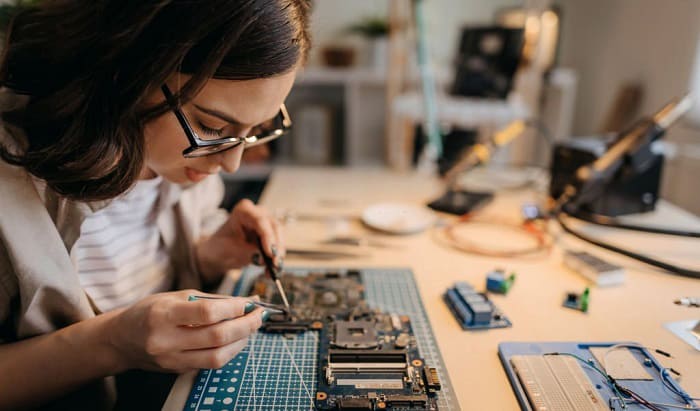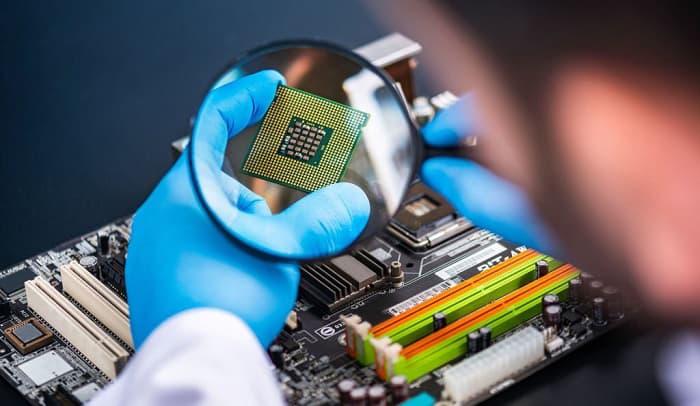If you are new to electronics, you are probably confused about the distinctions between a circuit board vs motherboard. Well, you don’t need to be, as we’ll talk about these differences below.
In short, a motherboard is only one type of circuit boards. Learn more about both of them below.
Table of Contents
Motherboard Vs Circuit Board
What is Motherboard?
A motherboard’s definition is the main board of a computer or smartphone. It is a thin plate that has different electrical components such as microchips, resistors and capacitors.
In addition to these attachments, there are also different connectors installed for different peripherals of a computer or smartphone.
Some examples of these peripherals are storage devices, monitor, keyboard, mouse, and more, meaning that the motherboard acts as the main connection point of these different electronic parts.
How Do Motherboards Work?
A motherboard serves as the primary circuit board in your computer. It links all the electronic accessories inside to allow them to communicate with each other.
Also, motherboard computing or transferring data becomes possible with the help of an OS (operating system). There is also an integrated circuit called the CPU, which distributes data to different parts of the motherboard.
Related:
A Comparison Between Microprocessor vs Integrated Circuit: What is the Difference?
What is a Circuit Board?
A circuit board is commonly known as a Printed Circuit Board (PCB). It is a flat surface board with tiny conductors connecting different electrical elements.
These connections are mostly made of different conductors such as copper, gold, or silver. In some cases, these conductors can be numerous. To prevent a short circuit, different layers are used so the wrong conductors don’t come into contact.
In general, most electrical devices such as computers, phones, and more use a circuit board. Depending on the device’s capability, the type of PCB will differ.
The most common types of circuit boards are single-layer, double-layer, and multi-layer PCBs. Here is a short description of each.
Single-Layer PCB
A single-layer or single-sided PCB is the simplest of all types, only equipped with one layer of conductor. This type of PCB is primarily used in typical home appliances or machines.
Double-Layer PCB
Next to the single-layer PCB, we have the double-layer or double-sided PCB with conductors on both sides. This type of circuit board is mainly used in lighting systems, car dashboards, amplifiers, and more.
Multi-Layer PCB
Another type of PCB is the multi-layer PCB. It is equipped with multiple conductors in different layers. Depending on the device’s complexity, these conductor layers may range from three to 40.
A multi-layer PCB is commonly used in advanced devices such as computers, laptops, smartphones, and more.
How Do Circuit Boards Work?
The main function of a PCB is to distribute electricity from the energy source to every element of a circuit. This task is possible thanks to the board’s resistors, transistors, capacitors, inductors, and diodes. The electrical elements on the PCB are linked by its traces or pathways.
Differences Between Motherboard and Circuit Board
A motherboard differs from a circuit board since it acts as the main board of a system unit. It is used to link different peripherals of a computer and let them communicate with one another.
On the other hand, a circuit board acts as the pathway for electrical and data transfer of different elements connected to it.
1. Advantages and Disadvantages of PCB
Printed circuit boards, including motherboards, have many advantages and disadvantages. Check them out below.
- PCB comes in a compact size, letting you save space without using visible wires
- Some circuit boards, especially the single and double layer, allow you to repair and replace damaged parts easily
- Compared to a bulky circuit, a circuit board allows you to save time when making connections
- Provides steady electrical connections compared to wired circuits
- As the copper conductor of a PCB is very thin, it cannot hold a higher load of electricity
- A multi-layer circuit board is hard to repair or is sometimes disposable
2. Advantages and Disadvantages of Motherboards
- People can customize a motherboard to suit their computers
- A motherboard is upgradable
- Small motherboards have fewer RAM slots and inputs for sound and video cards, which affect the performance of a computer
3. Cost of Motherboards & Circuit Boards
Usually, a PCB motherboard cost might range from $50 – $1500, depending on the type and features you want in your system.
As for circuit boards, you can find one that ranges from 50 cents to $300. The price also depends on what design and layers of conductors you need in your project.
FAQs
Is Circuit Board the Same as Motherboard?
A circuit board and motherboard are not the same. A motherboard serves as the main connection point for computers and smartphones, while a typical circuit board is compatible with more electronics.
Why Is the Motherboard Considered the Circuit Board?
A motherboard used for a computer is also considered a circuit board because it is a multi-layer PCB. Moreover, this PCB allows the data and electricity to travel to different electronic modules of a computer.
Conclusion
Even though a motherboard is one type of circuit board, they are still different in some characteristics. We hope the information above helped you understand these electronics better.
If you find this article helpful, you can share it with others so they will also know the differences between a circuit board vs motherboard.

I am Edwin Jones, in charge of designing content for Galvinpower. I aspire to use my experiences in marketing to create reliable and necessary information to help our readers. It has been fun to work with Andrew and apply his incredible knowledge to our content.

